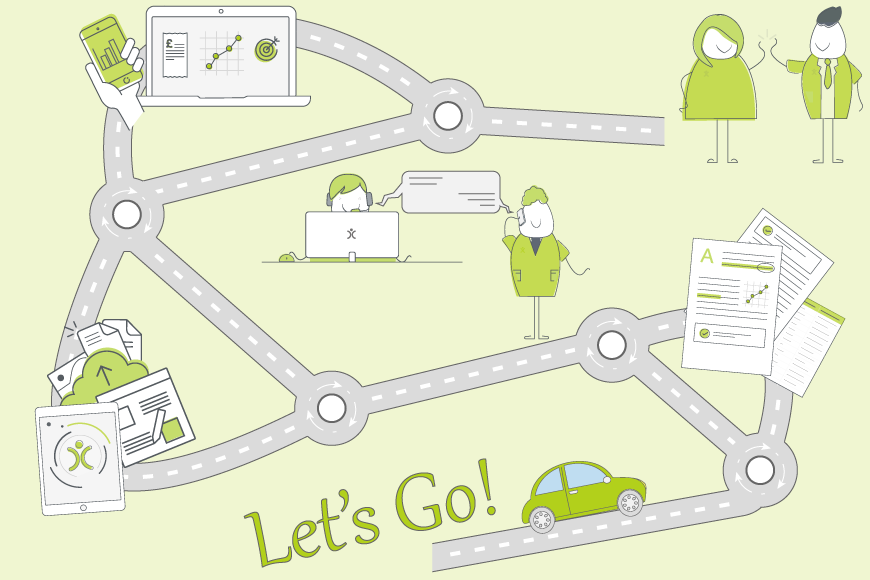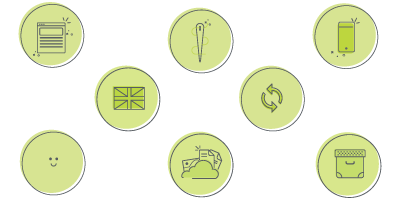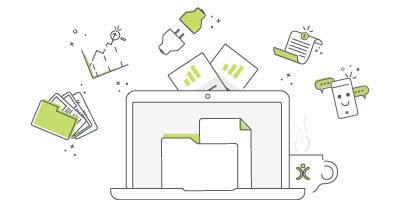3 Stages Of CRM Implementation
8 Apr 2024
For us here at OpenCRM, the idea of a business setting up a CRM implementation is a bit of a no-brainer. I mean, why wouldn’t you want to use a CRM?
We can actually tell you how much it helps from a user perspective. Here’s the not-so-surprising reveal: We are not only advocates of our product, but it also forms the nerve centre of our own daily operations. From Lead management to tracking sales, project management, and that all-important support, it all happens under one roof in OpenCRM.
But your new software has to fit your business, and its success relies on the successful management of your CRM implementation.
Trust us: without putting some thought into the process, you might find yourself wasting time as you try to start running before learning how to walk. Think of it in terms of planning a road trip. Firstly, your vehicle needs to be in good enough condition. You need to know where you are going and the best way to get there. Everyone involved in the trip needs to know timescales, so you are ready at the right time. And finally, if it is a complicated or long journey, you’ll need to plan details such as stopovers, food and drink, getting fuel and so on.
At the very least, you wouldn’t just set off without really knowing where you are going!
In the same way, you need to plan your CRM journey.
How is CRM implemented?
For this blog, I’m breaking down the CRM implementation into these three stages –
- Planning
- Execution
- Review
Planning (Part 1)
Even here, there is a pre-planning stage where you need to ask yourself a series of questions:
What goals are you aiming to reach by implementing a CRM solution? Are the people affected by the CRM adoption aware of the coming changes? Do you have their buy-in? What is your budget? And what timescales are you looking at?
Getting these questions answered before starting the execution means you are engaging people in your CRM implementation from the outset. Hopefully, you are also generating buzz about the forthcoming improvements to your business processes.
It also means you can establish a budget based on how many subscriptions you will need. You can also think about how much time and effort will be needed in the next steps.
Planning (Part 2)
Once you have determined those high-level goals, you can determine the details needed to achieve them. We’ve mentioned SMART planning in previous blog posts. This is especially relevant when considering your CRM implementation. Let’s consider a key aspect of most new CRM implementations—importing your company database.
Specific – Does your project manager know exactly what data needs importing?
Measurable – Do you know how many records should be in the system, for example how many clients you have? Once the data has been imported, the numbers should tally.
Achievable – is that data in a format that can be exported, cleansed and imported?
Relevant – Is all the data relevant to what you have to do with your CRM? Or is there data related to older software systems that will only bloat your database?
Timely – Do you have a clear timescale as to when the import will take place? What happens with any new client data you may accumulate between the old system being switched off and the new one going live?
In addition to your data, you will need to consider details such as configuration, integrations, and user permissions. All of this must be thought about and planned in advance to ensure you get off to a flying start. For example, if you are dealing with sensitive information that not everyone in the business should be able to see, then permissions will be an important one.

What do you get with OpenCRM?
Unrivalled customer support? 2TB of storage per account? Data held in EU? It's the sort of stuff we think you should be able to take for granted, but which you won't necessarily get from our competitors.
find out moreExecution
When it comes to successfully completing this stage of your implementation, the key is getting the right people in the right place at the right time.
Configuration
We all know that every business is unique. Even if you follow a fairly standard business model, there will be terminology and methods that are unique to you. Therefore, you need to take the out-of-the box CRM and make it your own through customisation. Removing modules you don’t need, adding custom fields to meet your requirements, and getting your permissions model in place.
User Buy-In
Getting your team to embrace your new CRM is important on so many levels. Firstly, you need your team to look forward to using their new tool. You know it is designed to improve productivity, but does the team? Have you shown them how their lives will be made easier? Perhaps with those performance reports that used to take an age to write, or setting up custom views that give them quick access to key segments of data.
That will go hand in hand with their training. Once you have got to grips with the system it is very straightforward to use – but without those all-important training steps even the most basic functions can seem complicated.
The training has another benefit – user feedback. Often the best-laid plans on paper don’t quite pan out that way in real-life. Those scenarios that you imagined actually work slightly differently. Once your team starts to use the system, you’ll figure out how you can adapt and evolve it to better meet your requirements. This is a normal step in the evolution of your CRM implementation.
Integrations
Timeliness is of the essence here. For example, if you are setting up the email integration, are your IT people on hand to do the back-end config for you? Often, a project can be delayed if not everyone is on the same page. Or if one department is waiting for another team to do their bit. Email integration is often an essential requirement, but it is one of many questions to ask.
What other business tools does the team use? Accounting is a key interest – if you are using your CRM to raise Sales Orders and Invoices, do you want to push these to an accounting package such as Sage50 or Xero? Do you have forms on your website e.g. Contact Us or Feedback forms? You might want to use something like a Jotform to bring this data into your CRM.
For many other apps and software packages, if they integrate with Zapier, there should be a way of getting information into your CRM system. This needs to be properly planned (and then executed).
It is always worth exploring if an integration is possible to save yourself from having to create and maintain multiple databases.
Your Shop Window
Remember the road trip analogy from earlier? Now, let’s imagine you are heading to a garage for a service. There are a couple of areas in the garage, but broadly, they can be split into the customer-facing and staff-only sections. As you’ll notice, the two have a very different appearance. It is important that the customer-facing area looks good. This is how your clients will perceive not just your brand, but they will use appearance to judge the quality of your work.
The same applies to any customer-facing documentation you create in your CRM system. You can customise your emails, PDFs, and mail merge documents. You should not underestimate the importance of this aspect of your CRM implementation. No matter how well your engine runs under the bonnet, if the customer-facing part is poor, it will reflect badly on your brand.

The salesforce alternative?
There are a lot of a CRM providers out there and it can be difficult to know how one compares to another. Click to find out more about how we stack up against the competition.
find out moreReview
The good news is your new CRM is up and running; well done! You might think your implementation process is over. But you’re really just getting started.
Now is the time to look back at the planning and execution stages to see if you are on your way to reaching those goals you set out to achieve. Are all the people using the system that you had planned for? Have you rolled out access to all the parts of the system that you intended to use, or are you still getting to grips with the basics? If it is the latter – and there can be many good reasons why a project doesn’t roll out as smoothly as anticipated – have you got plans to catch up and get back on track?
We often recommend that you roll out your CRM implementation in phases. Phase one might be getting your customer database loaded up, with your sales team starting to load up their pipelines with great opportunities. Once that is embedded, you may want to review that functionality and check if anything needs tweaking. Maybe you need to update the sales stages that are being used as an example. Once that is done, phase two might involve bringing the customer service department on board. Having learned from the previous phase – what works and what doesn’t – to make this next phase even more successful.
Carrying out frequent project reviewing ensures that you keep the end goal in sight. That way, even if the project moves slower than you would like, you can make sure your implementation is a success.
My role is to build our Customer Success team and I work with our clients and prospects helping them get the most from their subscription – it is a fun challenging role as no two days are the same. When not in the office I’ll be either making a noise on my guitar or getting my trainers on for a run out in the Yorkshire Dales, North York Moors or the Lake District.